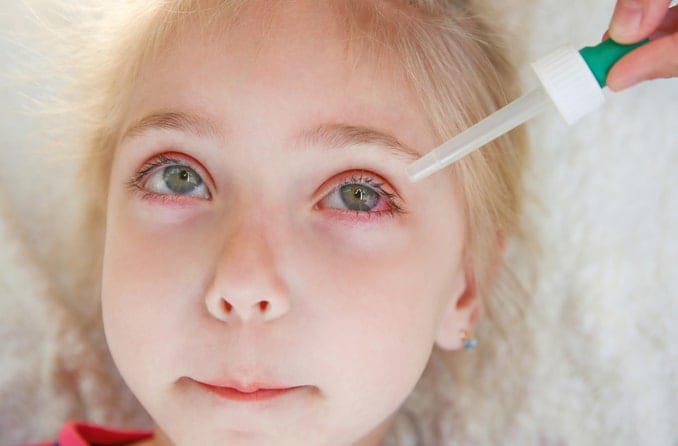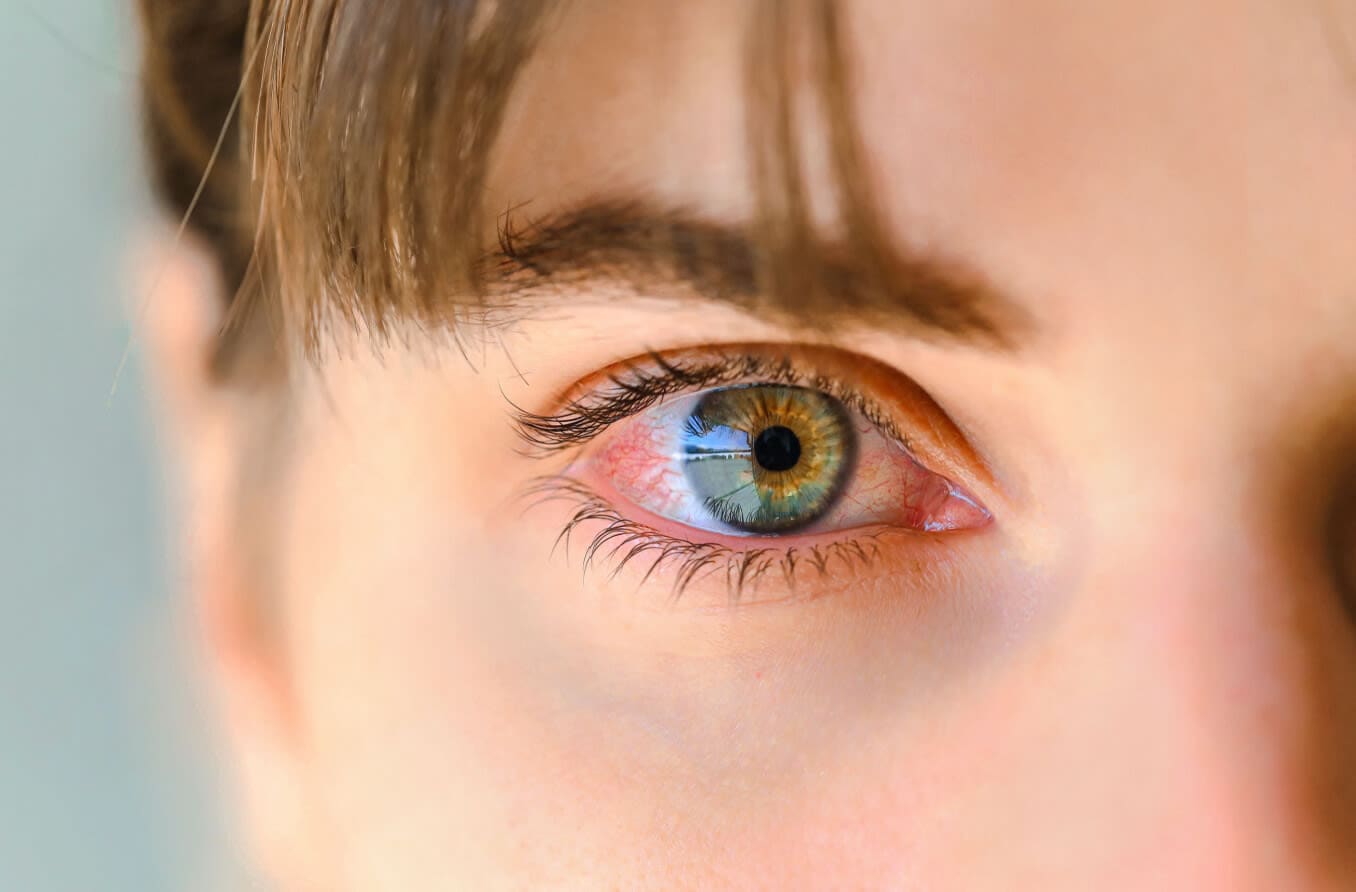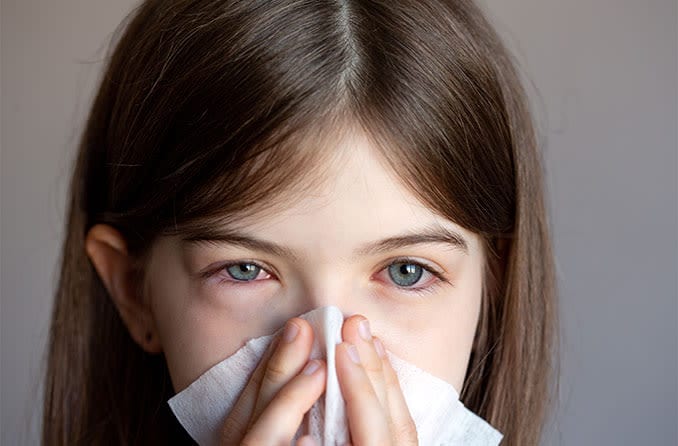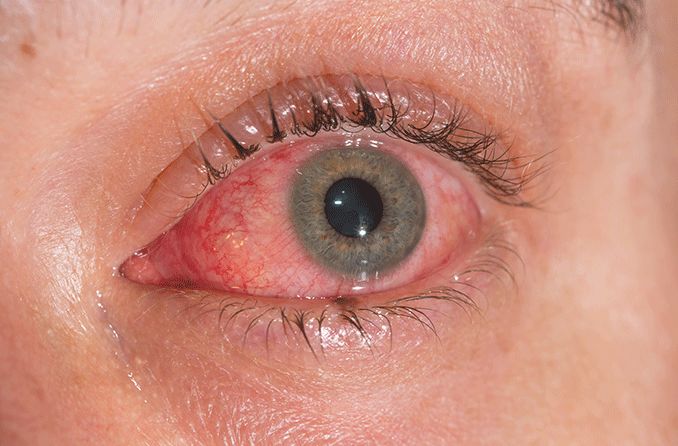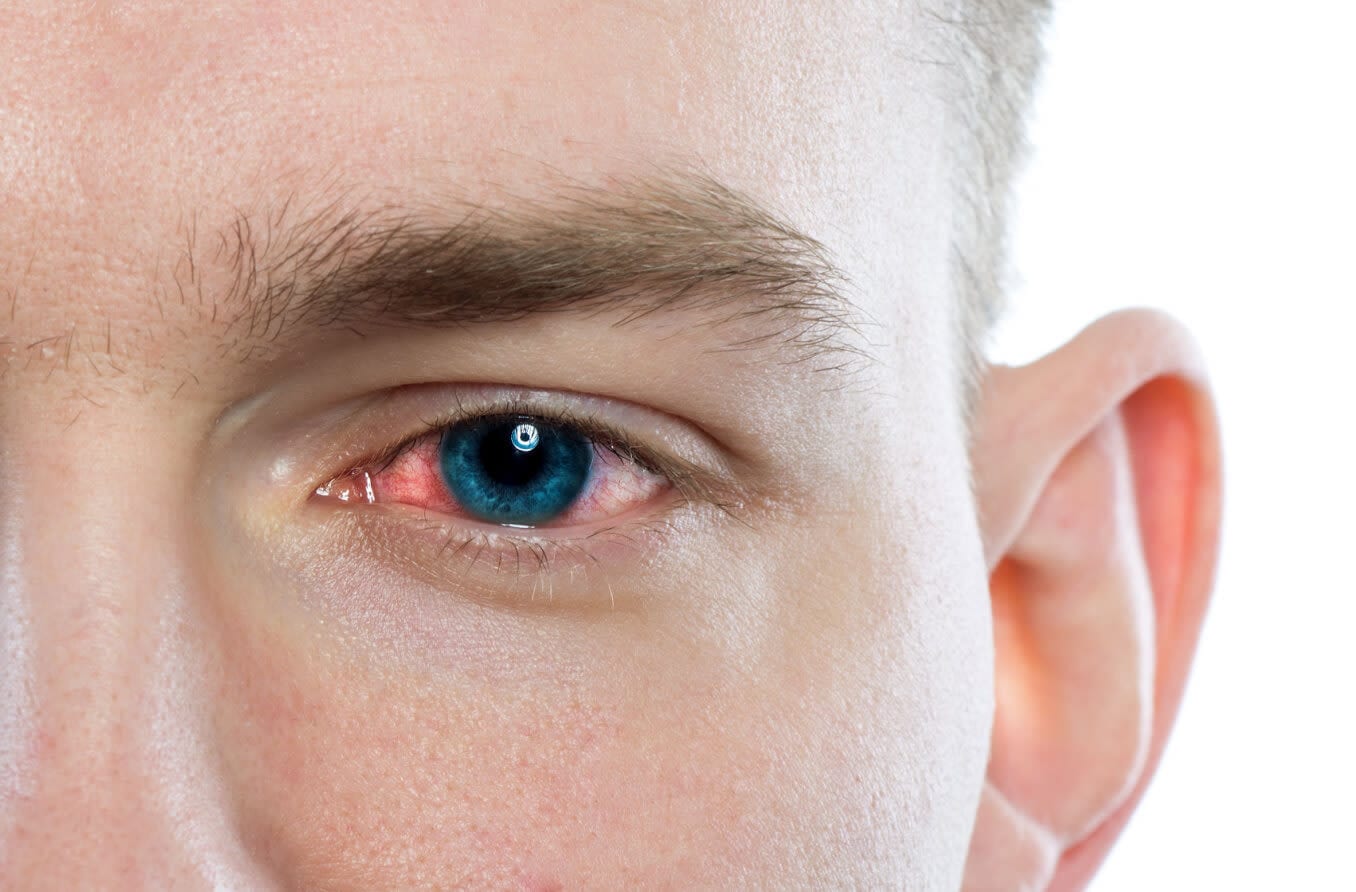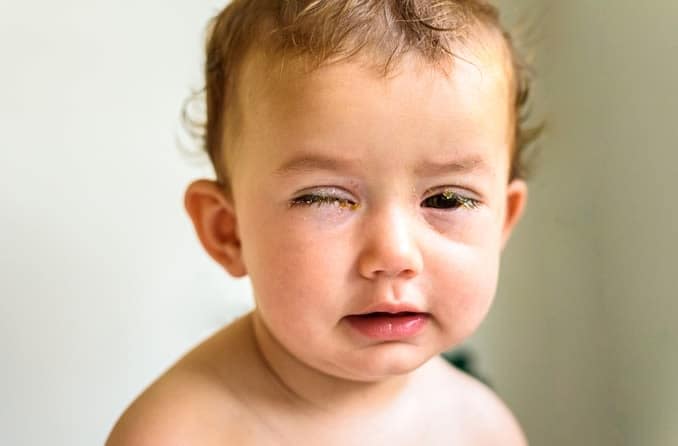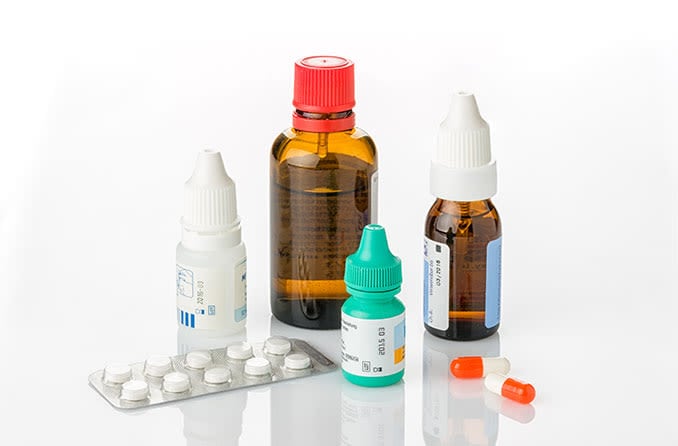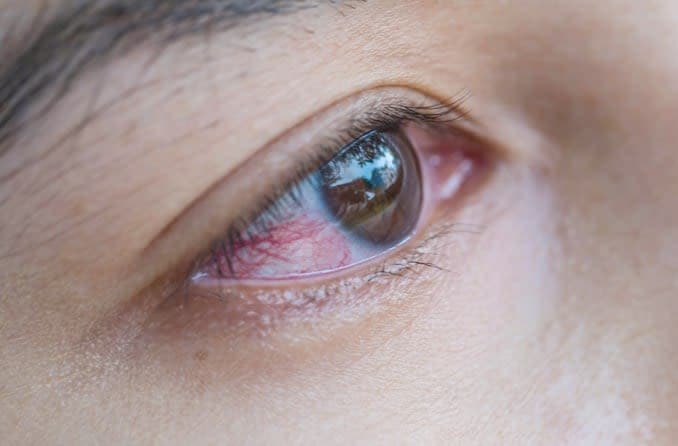Pink eye is a common eye infection in toddlers and children that causes inflammation of the conjunctiva, the thin, clear mucous membrane that covers the white of the eye and the inner surface of the eyelids. This inflammation typically results in red, watery, irritated eyes.
Types of pink eye and their causes
There are various types of pink eye in children that are caused by different exposures.
Viral pink eye occurs when exposed to an adenovirus, a common virus that results in a number of different illnesses, including pink eye, bronchitis and pneumonia. Viral pink eye in toddlers can also be caused by varicella-zoster virus (chickenpox or shingles), herpes simplex virus (the same virus that causes cold sores), and the virus that causes COVID-19.
Bacterial pink eye spawns when bacteria such as Staphylococcus aureus or Streptococcus pneumonia spread to the eyes. This type of conjunctivitis, as well as viral, is compared to having “a cold in the eye” because it typically is accompanied by other cold/virus symptoms. It is also possible for pink eye to be caused by the same bacteria found in certain sexually transmitted diseases.
Allergic pink eye is caused by different allergens that trigger a reaction from the eyes. The most common triggers for allergic conjunctivitis include dust, pollen, mold, pet dander and strong fragrances.
Irritant pink eye, also called chemical pink eye or toxic pink eye, occurs when a child’s eyes are exposed to an irritant. This can include smoke, chlorine, and certain chemicals and liquids that aggravate the eyes.
READ MORE: Pink eye (conjunctivitis)causes
Pink eye symptoms in kids
Signs of pink eye in toddlers and kids (and anyone else who has the condition) are pretty easy to spot. Depending on what kind of pink eye it is, once symptoms appear, it may be contagious. It’s for this reason that proper precautions should be taken as soon as symptoms are detected.
Common symptoms include:
Whites of the eyes appearing red or pink
Watery eyes
Itchiness or burning that makes your child rub their eyes
Puffy, swollen eyes
White, yellow or green eye discharge
Typically, thick or colored eye discharge is exclusive to bacterial conjunctivitis, which can infect one or both eyes. Viral pink eye typically causes red, itchy and watery eyes, and can also affect one or both eyes. Itchiness and excessive tearing are symptoms of allergic and irritant conjunctivitis too, but these cases almost always appear in both eyes.
Another way to determine which kind of pink eye you’re dealing with is to assess any additional symptoms experienced by your child. If they have a cough, sore throat and a fever along with their pink eye symptoms, they likely have the viral or bacterial strain.
Children who are sneezing, have a runny nose, or show other hay fever symptoms in addition to red, itchy eyes are likely experiencing allergic conjunctivitis.
If your child’s eye swelling is severe and they are particularly sensitive to light, you should have them examined by an eye doctor immediately to rule out injury or a more serious eye condition.
SEE RELATED: Treating swollen eyes in toddlers
Is pink eye contagious?
Bacterial and viral conjunctivitis are contagious once symptoms present themselves, and they remain contagious until symptoms resolve and the eyes return to normal.
Contagious forms of conjunctivitis spread when someone touches a contaminated object (an infected eye, a tissue or cloth used to clean infected eyes, etc.) and then touches their eyes or face. To help reduce the spread of infection from one eye to the other, or to another person, it's important to help your child keep their eyes clean by washing them regularly with a warm washcloth (with their eyes closed, of course).
Washing hands thoroughly and frequently is another critical way to prevent the spread of conjunctivitis, as well as many other illnesses and infections.
Allergic and irritant conjunctivitis are not contagious but can occur more frequently when exposed to irritants and allergens your child may be sensitive to.
SEE RELATED: Pink eye stages
Pink eye treatment for kids
If it’s determined that your child has viral conjunctivitis, the virus must run its course. Cold compresses on the eyes can help relieve swelling, itchiness and other symptoms, but there is no medical treatment for pink eye. It usually takes seven to 14 days for viral conjunctivitis to clear up completely.
Your doctor or pediatrician will likely prescribe antibiotics for bacterial conjunctivitis. They can come in eye drop or ointment form and may also include an oral antibiotic if other symptoms accompany the eye infection.
Using a warm washcloth to break up any dry or crusted discharge around your child’s eyes (typically when they wake up in the morning or from a nap) can help reduce the discomfort they experience from bacterial conjunctivitis.
After 24 hours of being on antibiotics, individuals with bacterial pink eye should no longer be contagious. However, it’s important for you to continue treatment for the entire time prescribed by the doctor, even if your child's eyes look better after a few days. You can also ask your doctor about home remedies for conjunctivitis to ease symptoms while the antibiotics do their work.
Allergic pink eye can be prevented by identifying the allergen causing the reaction and avoiding it. You can also ask your pediatrician about giving your child prescription or over-the-counter antihistamines (typically available in liquid, chewable tablet and eye drop form) to help manage allergic conjunctivitis and other allergy symptoms.
Treating irritant pink eye is as simple as flushing the eyes of the irritant. Tears are the eyes’ natural way to do this, but if more rinsing is needed, use a bottle of sterile saline or artificial tears to gently flush the eye.
Pink eye vs. other eye conditions
Not every eye irritation is a sign of conjunctivitis. Your toddler’s swollen eyes could be a sign of blocked tear ducts, an eye injury, a different kind of eye infection or a more serious health issue such as thyroid eye disease.
Blocked tear ducts — not uncommon in babies and toddlers — present symptoms similar to conjunctivitis. Your youngster will likely grow out of this as tissues in the tear duct mature, and massaging the lacrimal sac (where tears drain from the eye) can often help.
Having an eye care professional examine your child's eyes is always the best option when dealing with their sight. An experienced eye doctor can ensure your child’s eyes are healthy and functioning properly and prescribe the best treatment if any problem exists.
Whether it’s a need for vision correction, a pesky case of conjunctivitis or a more serious eye issue, making your child’s sight a priority is something you should never second-guess.
